
AI in Food Fraud Risk Prevention
Economically motivated adulteration (Food Fraud) represents one of the biggest threats to the food safety and quality of products worldwide and a constant head-scratcher for food & beverage companies. As food fraud is designed to avoid detection it is often difficult to estimate the frequency of occurrence as well as its full economic impact on the industry.
However, experts estimate that food fraud affects 1% of the global food industry, costing about $10-$15 billion a year, with new projections close to $40 billion a year. This can be attributed to the extreme cost of responding to a food fraud incident, including recalled products, loss of produce, and the need to inform affected consumers worldwide.
The most prominent food fraud practices include:
- Intentional ingredient substitution or bulking up to take advantage of expensive pricing of certain products
- Mislabeling of products as organic despite not being organic
- Dilution of pure or more expensive products to lower the cost of production
What is the impact of Food Fraud?
The impact of economically motivated adulteration isn’t only reflected in the potential financial loss for food & beverage companies but can easily evolve into a major consumer health. Adulterated food can lead to poisoning, allergic reactions, and in certain cases major health issues that can even result in hospitalization and deaths from undeclared ingredients. Besides the financial and health ramifications of food fraud, consumer trust can also be shaken in food & beverage companies whose products have been adulterated.
Considering the immediate and potentially widespread impact of food fraud denotes the necessity for food & beverage companies to be vigilant about such potentially harmful practices. For companies having a complete overview of their supply chain, including new incidents announced, supplier-related recalls and a wealth of food risk intelligence information of past food fraud incidents is paramount in order to be able to formulate risk mitigation strategies.
But this is not enough. In order to be able to shield the supply chain from disruptive incidents and safeguard the food safety and integrity of their products they need to be able to anticipate such practices and avoid them. By incorporating insights on future risk, they can take more robust proactive measures.

From Past to Future: A Food Fraud Analysis
To understand the risk posed by Food Fraud in the global supply chain we decided to take a look into the food safety history of Food Fraud incidents in the last five years as well as future risks through FOODAKAI.
FOODAKAI is the food safety risk intelligence platform that offers a total overview of new and emerging risks for the supply chain. It allows companies to incorporate new and emerging risks into their supply chain through forecasts of the risks and hazards that are projected to increase.
How does forecasting work?
Through AI-powered predictive analytics, the trend forecasting models utilize different sources in order to predict future incidents and trends. Historical incidents, laboratory data, and weather data represent a few of the main sources that are leveraged in order to train the forecasting models.
More specifically, trend forecasting takes advantage of multiple factors (more than 250 distinct factors) in order to produce robust generalized models and accurate predictions. Forecasting with Multiple Factors refers to the ability of a forecasting model to use more than one factor (also known as features, variables, or inputs) in order to predict future incidents
Some of the most intuitive factors include:
- historical incidents (number of incidents peaks, the sum of incidents, the average of incidents per month/year, etc)
- lab test data (below-limit lab tests, above-limit lab tests, etc.),
- weather data (temperature, precipitation, humidity, etc.),
- date (month of the incident, year of the incident, etc.)
As a result, even if the historical incidents are limited, by taking into account multiple factors, more accurate forecasting is achieved.
Diving into the Food Fraud Incidents of the past 5 years
According to FOODAKAI, over the last 5 years, Mexico was the country where most Food Fraud incidents have been reported (25.43% of the overall incidents), followed by India and Italy.
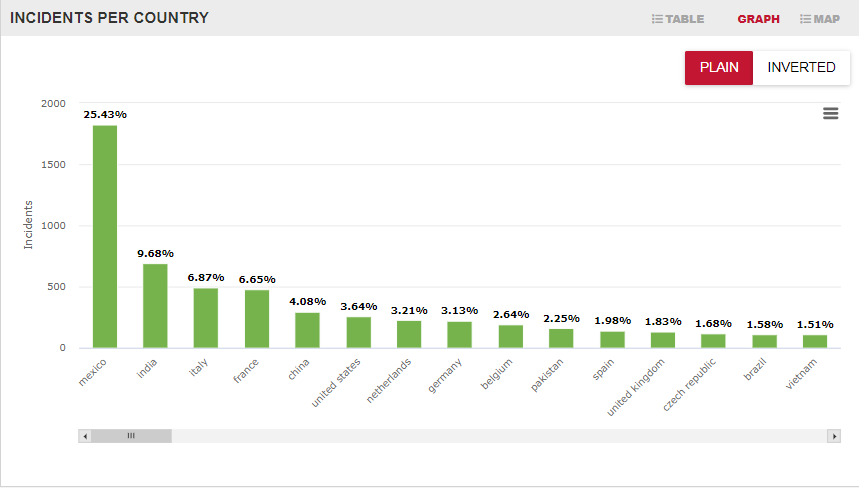
The three products with the most Food Fraud incidents associated to were:
- fried corn chips
- sesame seed
- potato chips
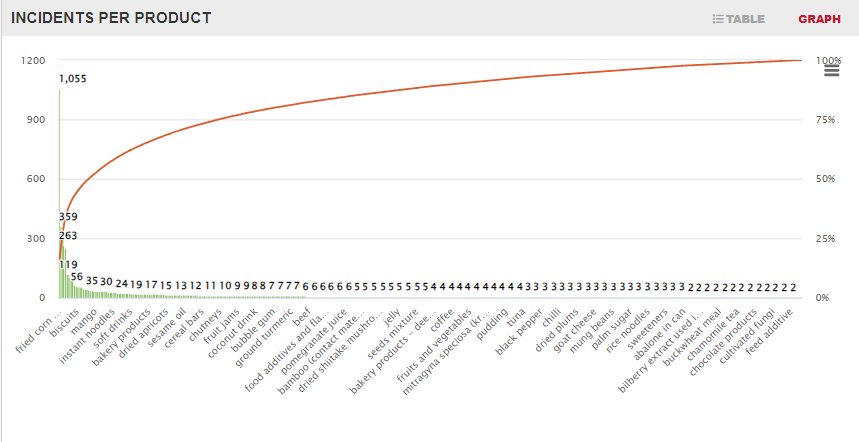
Looking back into the incidents trend over the last year, there is an evident increase from 2020 to late 2022, with a peak in May 2022. Over the next years, there was a decreasing trend up until today.
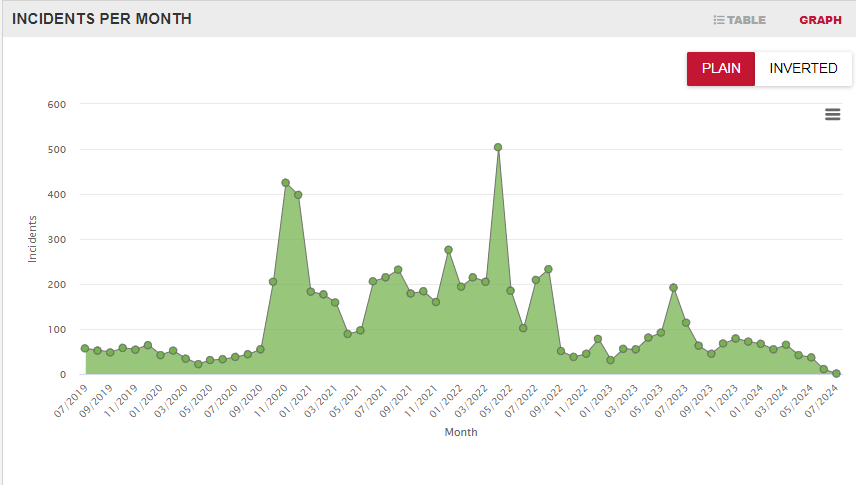
With a few insights into the food safety history of the Food Fraud globally, it is vital that we not only consider the past but also discover what FOODAKAI projects for the food safety risk for the next the year.
A 12-month projection of Food Fraud Risk
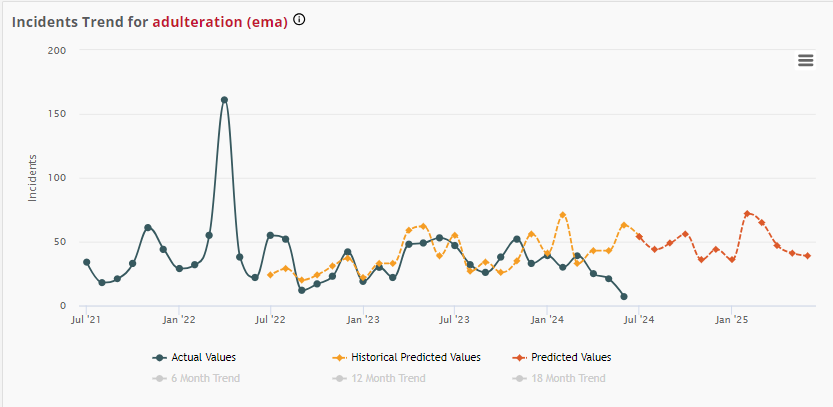
As evidenced in the image above, there is a steady increase in the number of incidents expected over the next months 62% regarding food product adulteration.
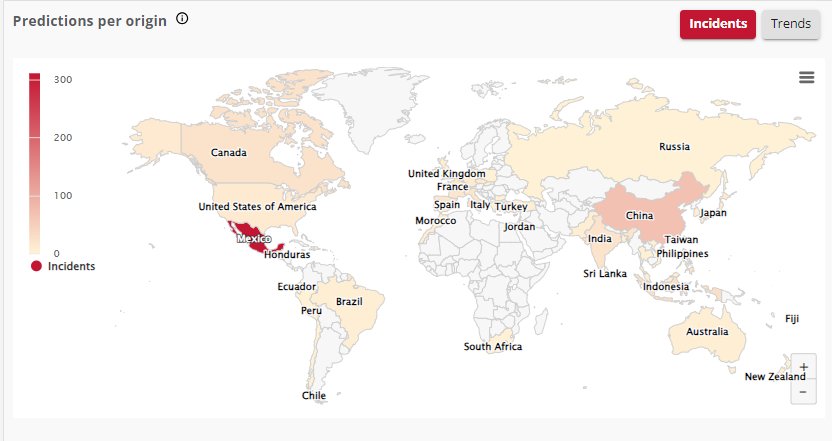
The country that is expected to have a higher risk for incidents over the next year is Mexico, followed by China.
When it comes to the ingredients & products that are expected to have an increased number of adulteration incidents, the following 3 came on top:
- Honey
- Chewing Gum
- Fried Corn Chips
Economically motivated adulteration remains a significant challenge for the global food and beverage industry, posing not only economic but also serious health risks to consumers, eroding trust in food safety.
The necessity for vigilant monitoring of the supply chain is paramount. Utilizing comprehensive data on past incidents and real-time intelligence is crucial for companies to develop effective risk mitigation strategies. However, anticipating and preventing future incidents is where true protection lies. By leveraging AI-powered predictive analytics, platforms like FOODAKAI provide invaluable insights into emerging risks, enabling companies to take proactive measures.
Integrating advanced forecasting models and maintaining a vigilant approach to supply chain management is essential for safeguarding food safety and integrity. As the industry continues to evolve, so must the strategies to combat food fraud, ensuring the health and trust of consumers worldwide.
Experience first-hand how you can shield your supply chain with highly accurate forecasts here.
Want to receive helpful food safety intelligence in your inbox?
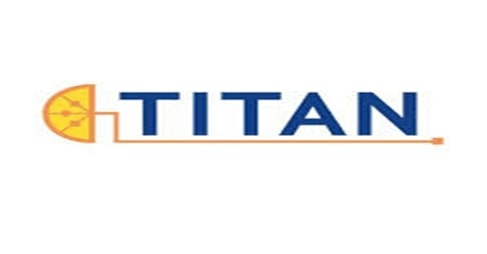 Funding for this research has been provided by the European Union’s Horizon Europe innovation programme ΤΙΤΑΝ (Grant Agreement Number 101060739). Funded by the European Union. Views and opinions expressed are, however, those of the author(s) only and do not necessarily reflect those of the European Union or European Research Executive Agency. Neither the European Union nor the granting authority can be held responsible for them.
Funding for this research has been provided by the European Union’s Horizon Europe innovation programme ΤΙΤΑΝ (Grant Agreement Number 101060739). Funded by the European Union. Views and opinions expressed are, however, those of the author(s) only and do not necessarily reflect those of the European Union or European Research Executive Agency. Neither the European Union nor the granting authority can be held responsible for them.








